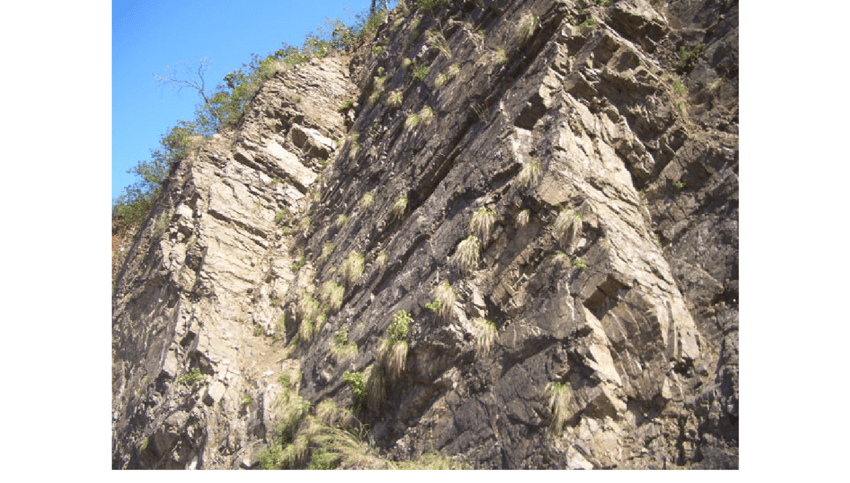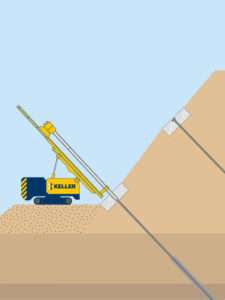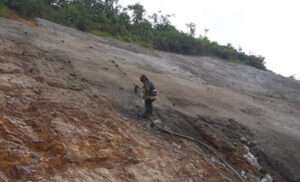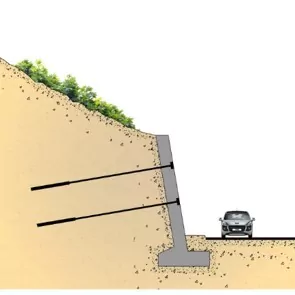Rock fissure grouting is an essential technique in geotechnical engineering used to seal and stabilize rock formations with natural or induced fractures. These fissures can compromise the structural integrity of foundations, tunnels, dams, and other infrastructure projects built on or within rocky terrains. By injecting grout into these fractures, engineers can significantly improve the rock’s stability and reduce the risks associated with water seepage, erosion, and structural settlement.
What is Rock Fissure Grouting?
Rock fissure grouting involves the injection of grout materials into cracks, voids, and fractures in rock formations to enhance their strength, stability, and impermeability. This process is particularly useful in areas where natural fractures or fissures weaken rock mass or cause unwanted water movement that can damage infrastructure.
The grout used typically consists of cement-based mixtures, chemical grouts, or a combination of both, depending on the specific conditions and requirements of the project. The primary goal of rock fissure grouting is to fill and seal these voids, preventing water infiltration, enhancing load-bearing capacity, and stabilizing the rock mass for construction.
Key Components of Rock Fissure Grouting
1.Grout Materials:
-
- Cement-based Grouts: Typically used to fill large cracks and voids, providing long-term durability.
- Chemical Grouts: Polyurethane, silicate, and epoxy-based grouts are often used for highly fractured rocks where cement-based grouts might not be as effective.
- Microfine Grouts: Ultra-fine cement-based grouts are often injected into small, tight fractures where conventional grout would be too viscous.
2.Injection System:
-
- A grout injection system is set up using a series of boreholes drilled into the rock. These boreholes are strategically placed along the fissures to ensure thorough penetration of grout into the fractures.
- Pressure Monitoring: Real-time monitoring is crucial to control the grout injection pressure and volume to prevent over-injection or excessive spreading.
3.Monitoring Equipment:
-
- Specialized sensors and pressure gauges are used to monitor the grout flow, pressure, and curing process, ensuring proper coverage and effective sealing.
The Rock Fissure Grouting Process
The process of rock fissure grouting typically involves several stages:
1. Site Investigation and Mapping of Fissures
Before grouting begins, a thorough site investigation is conducted. Geotechnical engineers use methods like geophysical surveys, borehole drilling, and water pressure tests to locate and map the fissures and voids in the rock mass. This information helps determine the appropriate grout type, pressure, and injection methods.
2. Drilling Boreholes
Boreholes are drilled along the mapped fissures at calculated intervals and depths. These boreholes provide the pathways for the grout injection and ensure that grout can reach the targeted fractures. The boreholes may be vertical or inclined, depending on the orientation of the fissures.
3. Grout Injection
Once the boreholes are in place, the grout is injected under controlled pressure through specialized pumps. The grout fills the fissures and fractures in the rock, sealing them effectively. Multiple stages of injection may be required, with the grout being injected at various depths or from different points to ensure comprehensive sealing.
4. Curing and Monitoring
After the grout is injected, it is allowed to cure. During this period, engineers monitor the grout’s penetration and the stability of the rock mass. If necessary, additional grout injections are performed to ensure complete filling of the fractures and voids.
Applications of Rock Fissure Grouting
Rock fissure grouting is employed in various construction and infrastructure projects where the stability of rock formations is crucial:
- Dams and Reservoirs: Grouting is used to seal fissures in rock foundations to prevent water leakage and ensure the structural integrity of dams.
- Tunnels and Underground Structures: When tunneling through rock, fissure grouting is employed to stabilize the tunnel face and prevent water ingress, which could lead to erosion or flooding.
- Foundations: For buildings or bridges constructed on rocky terrain, rock fissure grouting helps stabilize the foundation and prevent settlement or movement due to weak rock layers.
- Mining: In mining operations, grouting is used to stabilize rock masses in underground mines or to fill voids created by mining activities, reducing the risk of collapse.
Advantages of Rock Fissure Grouting
1.Enhanced Structural Stability: By sealing fractures, grouting improves the load-bearing capacity and stability of rock formations, preventing settlement or movement of structures built on them.
2.Waterproofing: Fissures in rock can allow water to seep through, leading to erosion or corrosion of structures. Grouting reduces or eliminates water ingress, making it ideal for dam, tunnel, and foundation applications.
3.Cost-Effective: Grouting is often more affordable compared to other rock stabilization methods like rock bolting or excavation, especially for large-scale projects.
4.Minimal Disruption: Unlike traditional methods that may require excavation or blasting, grouting is a relatively non-invasive process that can be completed without disturbing the surrounding environment.
Challenges and Considerations
While rock fissure grouting is highly effective, there are challenges that must be considered:
- Geological Complexity: The effectiveness of grouting depends on the nature of the rock mass and the characteristics of the fractures. Highly fractured rock masses or unpredictable fracture patterns may require advanced techniques and materials.
- Environmental Concerns: Improper grouting can lead to grout leakage, which may impact surrounding ecosystems, particularly in sensitive areas like aquifers or rivers.
- Grout Selection: Choosing the wrong type of grout can result in poor penetration, leading to ineffective sealing. Engineers must carefully assess the rock type and the properties of the fissures before selecting the grout.
Future of Rock Fissure Grouting
The future of rock fissure grouting lies in advancements in materials and technology. Innovations such as high-performance grouts, smart sensors, and automated injection systems are improving the efficiency, precision, and environmental safety of grouting operations. These developments will likely result in more sustainable, cost-effective, and reliable solutions for stabilizing rock formations in challenging geotechnical environments.
Conclusion
Rock fissure grouting is a vital technique in geotechnical engineering, offering an effective means of sealing and stabilizing rock formations. Whether for dams, tunnels, foundations, or mining operations, this method ensures structural integrity and mitigates risks related to water seepage and soil movement. As technology and materials continue to evolve, the future of rock fissure grouting looks promising, offering even greater precision and sustainability in geotechnical applications.







